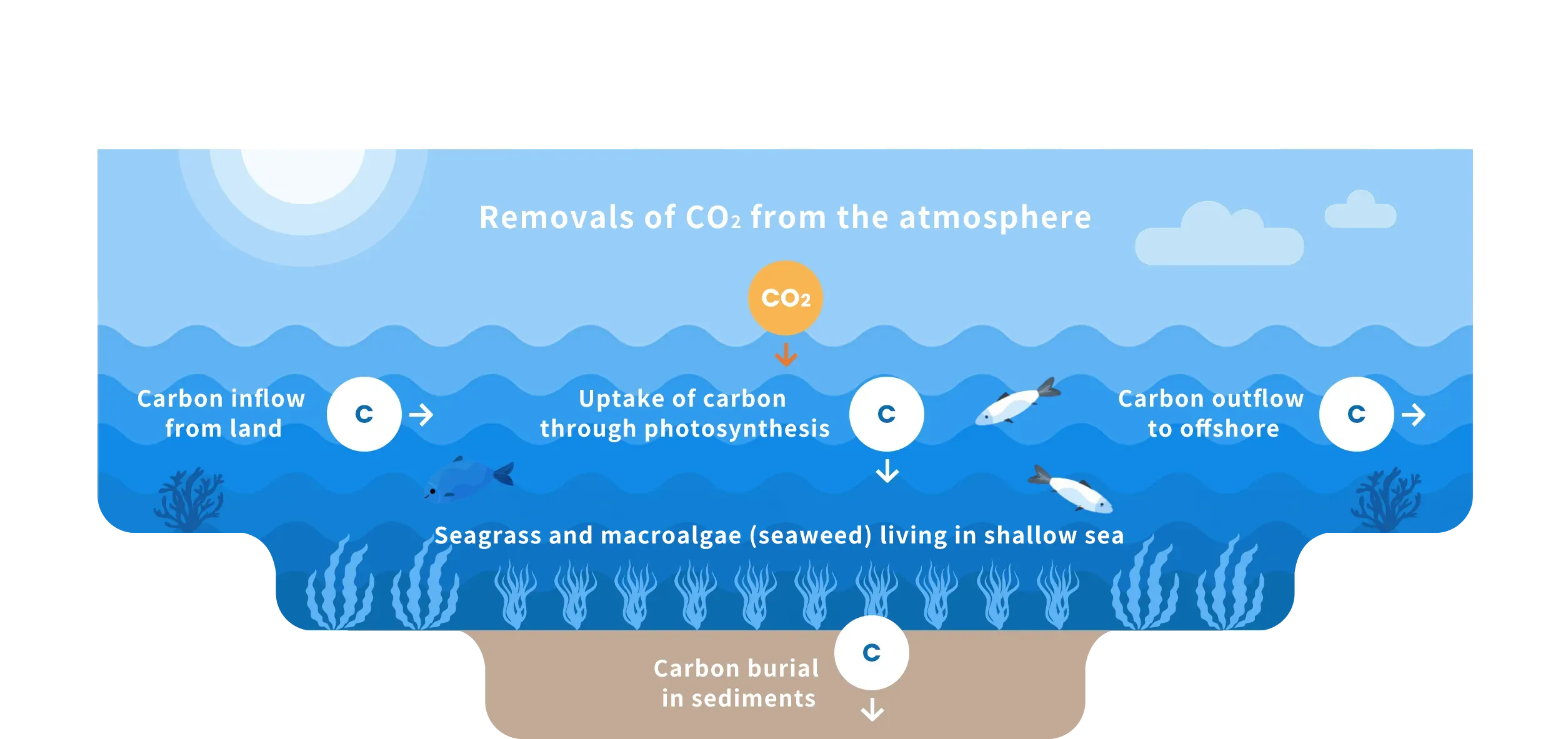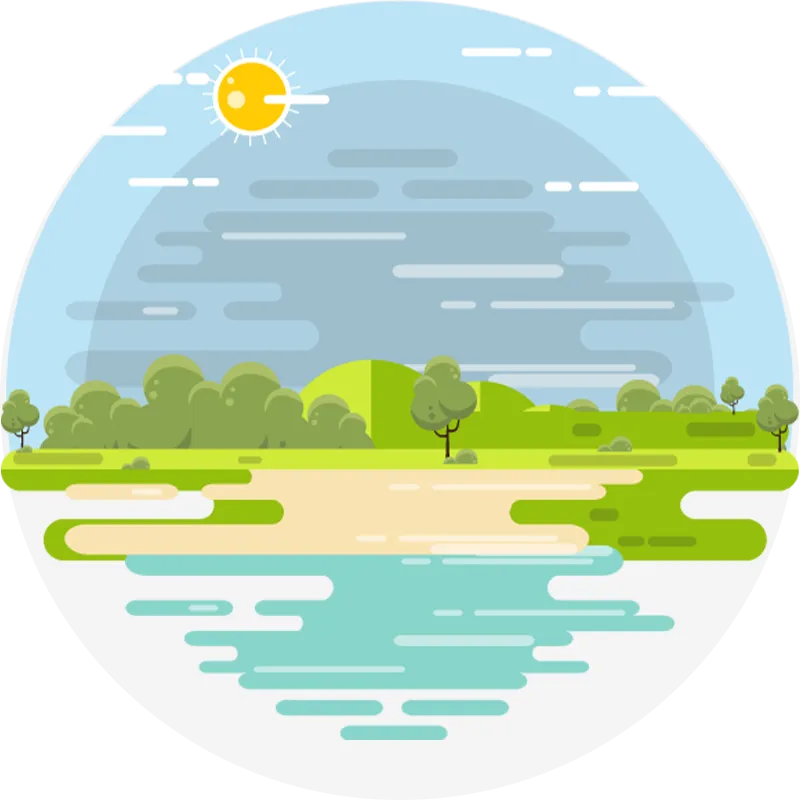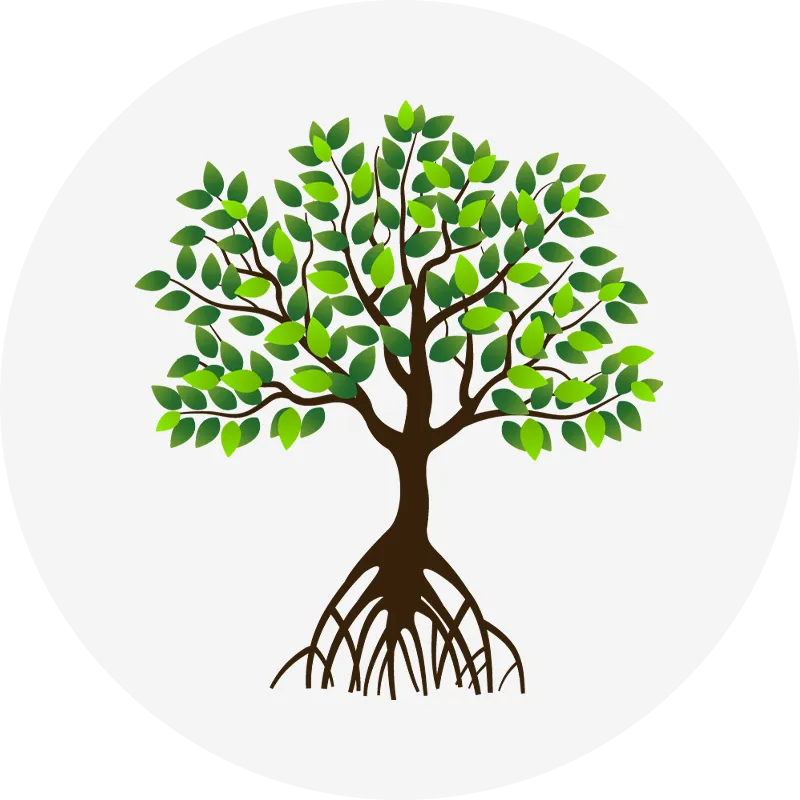Seagrass
Seagrasses, such as eelgrass, are marine flowering plants that bloom in the sea, reproduce by seeds, and spend their entire lives in the sea. They are found in relatively shallow areas and do not grow deep in the sea floor. e.g., eelgrass, sea duck, etc.
Macroalgae (seaweed)
Algae living in the sea. They reproduce by spores. The root of macroalgae (seaweed) don't exist to absorb nutrients; they exist to adhere to rocks. e.g., kelp, wakame seaweed, etc.
Salt marshes and tidal flats
An area of sandy or muddy shallow water in the intertidal zone that dry up at low tide and submerges below the sea surface at high tide are called tidal flats. They are formed when sediments carried by rivers and coastal currents accumulate on beaches and estuaries. Wetlands with thick reeds and other vegetation that develop close to land in tidal flats are called salt marshes.
Mangrove Forests
Trees that inhabit brackish water areas where river water and seawater mix, such as estuaries in the tropics and subtropics. In Japan, they are distributed along the coasts further south than Kagoshima Prefecture.





